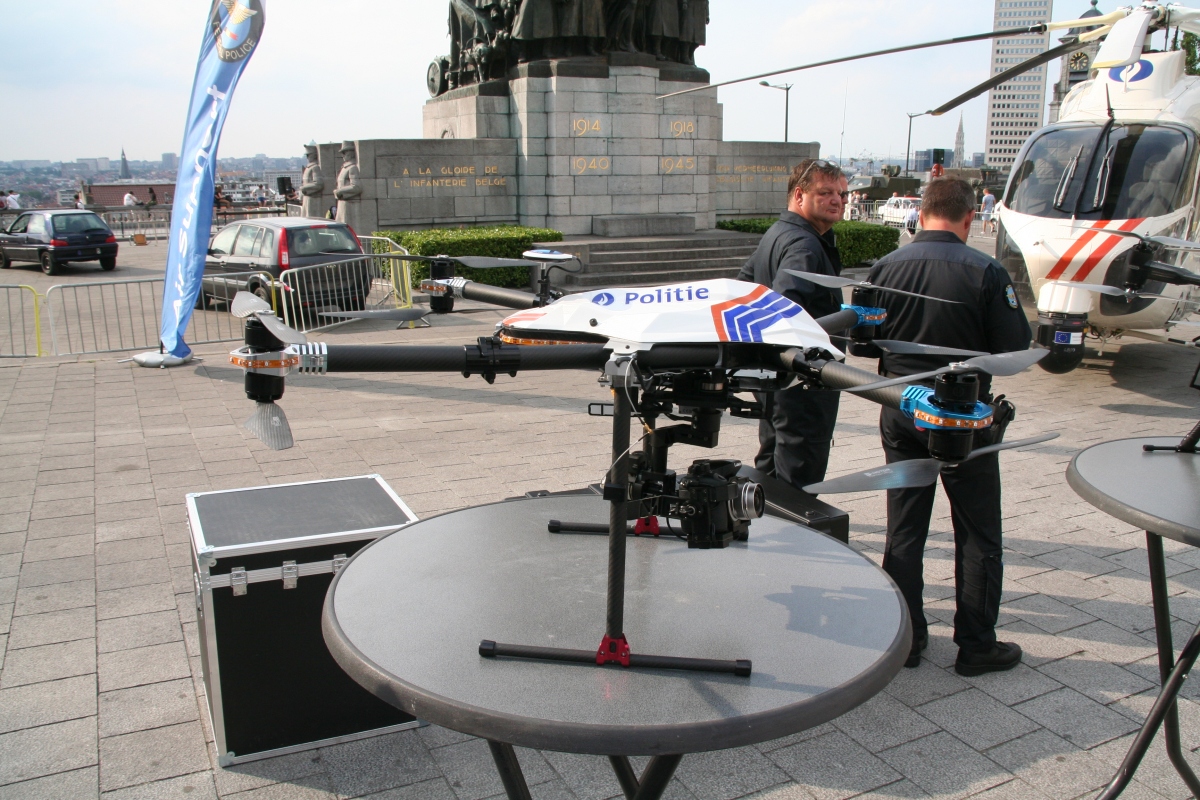This week we consider another of Kristin Sandvik’s pieces on police drones. This piece is focussed on their political and moral economies and is from the book Drones and Unmanned Aerial Systems, Aleš Završnik (ed.) from Springer (2016).
Here’s what we thought
This article explores the ongoing social dialogue surrounding the use of drones. In particular the article focuses on the construct of the ‘good’ drone, compared with the ‘bad’ drone, which we might infer refers here to the type of drone used for targeted killing in foreign lands. The imputation here is that the drone industry in particular a discourse around the ‘good’ drone, while all the while laying the foundations for the inevitable arrival of armed drones in the domestic space.
I was quite taken with the author’s concept that: ‘Open-ended possibility as a value in itself is an important part of the ongoing and future constitution of armed drones’ (14). That, in effect, the very fact ‘anything is possible’ is used as a selling point of the technology is also simultaneously preparing us for the inevitable arrival of something far worse. This is an interesting problematic, and one that is not unique to the modern drone. Indeed, the oscillation between technology as a boon, and technology as a potential evil has been going on since at least the end of WW2, and the emergence of the microchip and transistor in the 1950s/1960s. It is interesting then that here, the dynamic seems to be used directly by the technology industry to pave the way for a less-than-necessarily-positive outcome.
Mike Ryder, Lancaster University
I reviewed the articles The Political and Moral Economies of Dual Technology Transfers: Arming Police Drones (2015) & Public Order Drone: proliferation and disorder in civil airspace (2016) together as they are closely related.
The discussion on drone surveillance is one that is interesting, but covered a lot in the literature already. The drone industry’s fight to access the airspace however is one less covered, and therefore a greater contribution to the literature. For more work on this issue, I would also recommend checking out Chantal Lavallee, who analyses this especially from an European perspective. I thought the main argument of the article was very interesting. I would have loved a more in-depth analysis on the critical interplay between industry and police forces, to get a better insight into their interactions and which societal pushes stem from which actor. While I like the many examples and anecdotes the author presented, I do think the article is very descriptive, with less argumentation why her analysis fits the situation best. Nonetheless overall it was good food for thought. I find it extremely interesting to see how the industry views the public: This article was really illuminating for me in that respect and I would be very curious to see how the industry sees the public on various different issues concerning emerging technologies, and how it compares. As public order drones have proliferated extremely rapidly the past 2 years since this has been written, I would also be interested to see whether the public has been educated “successfully” since then.
I think it is easy to immediately dismiss the notion that arming police drones is coming soon. It is not likely at the present moment, especially in a country like Norway, where the author comes from, where the police generally does not even carry weapons. However, the author makes it clear that she is analysing the larger process of how society is moving towards that development, and more specifically the factors that impact the shaping of the “moral economy”. I think that is the most important thing to focus on: it is an analysis of the process, not the result.
I have doubts about the choice of a Switchblade as the frame of analysis though. I have not often seen an interest in industry for small loitering munitions like that. Another armed tactical UAV perhaps, but the Switchblade only has a small loitering time (30 minutes) and I would not personally consider that the most likely future armed drone of law enforcement.
Maaike Verbruggen, Vrije Universiteit Brussels
The part of Sandvik’s article which I found most interesting was the idea that the increasing use of micro-drones could keep boots on the ground, rather than remove the need for them as the use of larger predator and reaper drones suggests. I’m not entirely convinced that ground troops using micro-drones will result in them remaining deployed for longer. Micro-drones offer soldiers a tactical advantage over their immediate adversaries, yet ground troops will only remain deployed if their role is strategically beneficial.
I completely accept that if a ground force using micro-drones were to become enormously effective at killing the enemy, then their continued presence could become a strategic issue. However, we know from recent conflicts in Afghanistan, and in Iraq and Syria, that even where (more) ground troops would increase the likelihood of victory, they will not be deployed where their presence is not a strategic imperative that can be sold to the public. Indeed, whilst a large-scale Western ground troop deployment would have eliminated ISIS very quickly, the lack of political will and strategic importance means that air power made up the majority of Western deployments, alongside special forces. Indeed, as special forces are a strategic force, and there have been many reports of them using micro-drones in their operations against high-value ISIS targets. It is perfectly possible that they would continue to be deployed against ISIS, perhaps adding to the idea that Western nations are engaging in perpetual war against Islamist extremists.
Joshua Hughes, Lancaster University
Let us know what you think in the comments below
